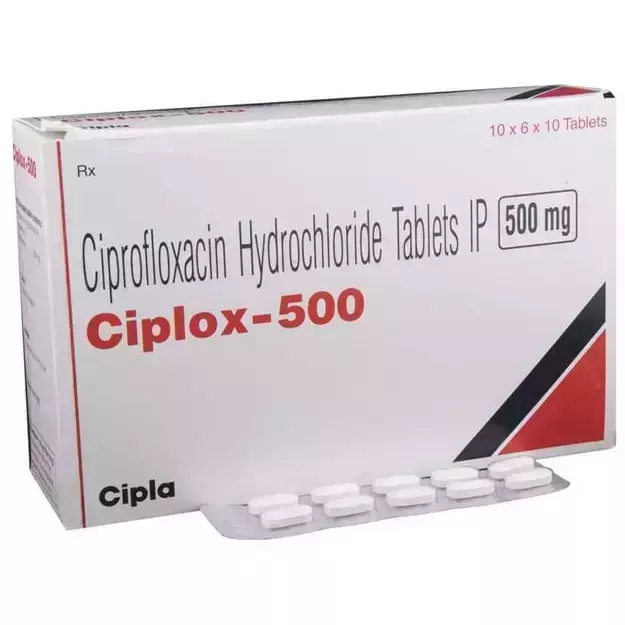
Cipro Us Price
The antibiotic is expected to be available by year end.

Ciprofloxacin is a fluoroquinolone flor-o-KWIN-o-lone antibiotic used to treat a number of bacterial infections. In the United States ciprofloxacin is pregnancy category C.
This is an antibacterial agent, which can effectively help people get rid of diseases provoked by susceptible pathogens. Antibiotics are not the medicines to be used uncontrollably. So, please, buy Cipro online only after your doctor confirms you need it. However, this is a big mistake as Cipro works only against bacterial infections. The drug acts by inhibiting the division of the pathogenic cells, thus allowing the immune system to cope with the infection easier and faster. Consult your doctor regarding the dose of Cipro. Usually, it depends on your age, the medical condition you suffer, the health of your kidneys, and other things that may play a role in the efficacy and safety of using this medication.
Cipro may be used alone or with other medications. These are not all the possible side effects of Cipro. Cipro tablets are coated, bilayer tablets consisting of an immediate-release layer and an erosion -matrix type controlled-release layer. Ciprofloxacin hydrochloride is 1-cyclopropylfluoro-1,4dihydrooxo 1-piperazinyl quinolinecarboxylic acid hydrochloride. H 2 O and its molecular weight is Ciprofloxacin betaine is 1-cyclopropylfluoro-1, 4-dihydrooxo 1-piperazinyl quinolinecarboxylic acid. Cipro is available in mg and mg ciprofloxacin equivalent tablet strengths. Cipro tablets are nearly white to slightly yellowish, film-coated, oblong-shaped tablets. Each Cipro mg tablet contains mg of ciprofloxacin as ciprofloxacin HCl CIPRO is indicated in adult patients for treatment of complicated intra-abdominal infections used in combination with metronidazole caused by Escherichia coli, Pseudomonas aeruginosa, Proteus mirabilis, Klebsiella pneumoniae, or Bacteroides fragilis.
Adolescents and Adults age 12 years and older Cellulitis - - mg twice a day or mg once daily for 10 days PI Sinusitis - - mg twice a day for 10 days PI Strep throat - mg once daily for 10 days PI. Suspension and tablet are not bioequivalent on a mg-to-mg basis. Adults and Adolescents Age 13 years and older Pneumonia, community-acquired - mg twice a day for 10 days PI Sinusitis - mg twice a day or mg cipro 1000 mg tablet daily for 10 days IDSA Skin infections - mg twice a day for 10 days PI Strep throat - mg twice a day for 5 - 10 days or mg once daily for 10 days PI Urinary tract infection - mg twice a day for 3 - 7 days IDSA. Do not take within 2 hours of each other. Adults and Adolescents Age 12 years and older Pneumonia, community-acquired - mg twice a day for 14 days PI Skin infections - mg twice a day for 10 days PI Strep throat - mg twice a day for 10 days PI.
How does it work mechanism of action? Ciprofloxacin is an antibiotic that is used to treat bacterial infections. It stops the multiplication of bacteria by inhibiting the reproduction and repair of their genetic material DNA. The FDA approved ciprofloxacin in October Ciprofloxacin belongs to the fluoroquinolone class of antibiotics.

Cipro - the antimicrobic broad-spectrum agent derivative of fluroquinolone, suppresses bacterial DNA gyrase, breaks DNA synthesis, growth and division of bacteria; causes prominent morphological changes and fast death of a bacterial cell. It effects bactericidal at gram-negative organisms during a dormant period and deletion, on gram-positive microorganisms - only during deletion. During taking Cipro there is no parallel development of resistance to other antibiotics, which do not belong to group of inhibitors of a gyrase that does it highly effective in relation to bacteria which can be steady, for example to aminoglycosides, penicillin, cephalosporins, tetracyclines and many other antibiotics. Baycip - the drug, which is highly effective at infections of urinary tracts; at intake it quickly gets into kidneys, has a long-term effuse, has bactericidal effect on Pseudomonasaeruginosa. Drug is prescribed at treatment of oncological patients.
It works by killing bacteria. This medicine will only help infections caused by bacteria and will not work for the common cold, flu, or other viral infections. This can happen during treatment or several months after you stop taking ciprofloxacin. Tendon problems may be more likely in children and older adults, or people who use steroid medicine or have had an organ transplant. Tell your doctor if you are pregnant. You should not breastfeed while taking ciprofloxacin and for 2 days after your last dose.
Ciprofloxacin is a fluoroquinolone antibiotic used to treat a number of bacterial infections. Common side effects include nausea, vomiting, and diarrhea. Ciprofloxacin was patented in and introduced in Ciprofloxacin only treats bacterial infections; it does not treat viral infections such as the common cold. For certain uses including acute sinusitis, lower respiratory tract infections and uncomplicated gonorrhea, ciprofloxacin is not considered a first-line agent. For example, ciprofloxacin in combination with metronidazole is one of several first-line antibiotic regimens recommended by the Infectious Diseases Society of America for the treatment of community-acquired abdominal infections in adults.
Limitations-of-use: Reserve fluoroquinolones for patients who do not have other available treatment options for acute sinusitis. Limitations-of-use: Reserve fluoroquinolones for patients who do not have other available treatment options for acute bacterial exacerbation of chronic bronchitis. Acute uncomplicated: Immediate-release, mg PO q12hr for 3 days; extended-release, mg PO q24hr for 3 days. Limitations-of-use: Reserve fluoroquinolones for patients who do not have cipro 1000 mg tablet available treatment options for uncomplicated urinary tract infections. Dry powder for inhalation: Orphan designation for patients with NCFB who suffer from frequent severe acute pulmonary bacterial exacerbations which lead to further inflammation, airway, and lung parenchyma damage. Indication for treatment and prophylaxis of plague due to Yersinia pestis in pediatric patients from birth to 17 years of age.